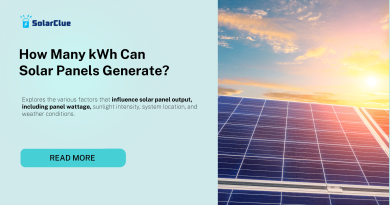What Are The Differences Between On Grid Off Grid And Hybrid Solar Power System
Table of Contents
Introduction to Solar Power Systems
Over the last couple of years, the popularity of solar power systems has skyrocketed, and rightly so. With the world pushing towards renewable energy sources and individuals desiring greater energy independence, solar power stands as an appealing and sustainable energy option.
Solar systems typically come in three primary types: on-grid, off-grid, and hybrid systems. Although all three utilize solar panels to generate power, they operate differently and serve unique purposes depending on consumers’ specific needs. In this article, we will explore the differences between on-grid, off-grid, and hybrid solar power systems to help you better understand each system’s operation, benefits, and ideal usage scenarios.
On-Grid Solar Power Systems
On-grid systems, also known as grid-tied or grid-connected systems, are the most common types of solar energy installations. These systems are directly connected to the public electricity grid and output power parallel to the grid supply.
The primary advantage of an on-grid system is its ability to feed excess solar energy back into the grid, resulting in financial credit or a rebate on the owner’s electric bill, through a mechanism known as net metering. However, they are not designed to function during power outages when the public grid is down, to avoid backfeeding and potentially posing a risk to grid workers.
Off-Grid Solar Power Systems
As the name suggests, off-grid systems operate independently of the public electricity grid and are typically chosen by those seeking full energy self-sufficiency. These systems rely heavily on battery storage to accumulate surplus power generated during the day, which is then used during non-sunlight hours or in periods of high energy demand.
While the energy independence these systems provide is appealing, the high cost of battery storage solutions often makes them more expensive than the alternatives. Off-grid systems are particularly useful in remote locations where grid connection may not be easily accessible.
Hybrid Solar Power Systems
The hybrid solar power system effectively combines the best of both the on-grid and off-grid systems. Like on-grid systems, hybrid solar setups are connected to the public grid but also incorporate battery storage, similar to off-grid systems.
This combination provides the flexibility of being able to store excess power for later use while still having the security of grid power as a backup when needed. In the event of a power outage, the hybrid system can continue to operate by using stored battery power. These systems are more complex and costly due to their dual functionality but can offer an optimal balance of energy independence and reliability.
Choosing the Right Solution
Your choice of solar power system depends on your specific needs and circumstances, such as the electricity demand of your property, your budget, the solar potential of your area, and your connection to the grid. It is essential to carry out proper research and consult professionals to make the most informed decision.
Conclusion
In conclusion, understanding the differences between on-grid, off-grid, and hybrid solar power systems is crucial in choosing the system that will best serve your energy needs. On-grid systems offer seamless integration with the public grid, while off-grid systems provide complete energy independence, with hybrid systems falling somewhere in between.
Whatever choice you make, embracing solar power is an impactful step towards a sustainable future, effectively reducing reliance on fossil fuels, decreasing greenhouse gas emissions, and promoting energy independence. With broadening technological advancements and decreasing costs, solar power continues to stand as a promising solution in the shift towards renewable energy.
Here at SolarClue®, we offer a smart, practical, and “beautiful” solution. You will be answered for all the questions related to Solar.
We provide all kinds of brands that are the Best Solar panels in India.
If you are the one who is planning for the solar power system. Don’t hesitate to contact our team!
Looking forward to empowering you with solar energy, just like hundreds of our other clients!



